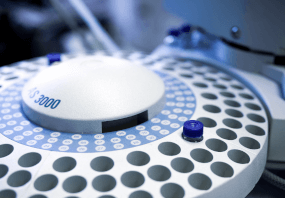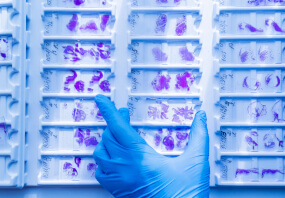SDS Lysis Buffer is a relatively strong cell tissue lysis buffer, usually suitable for the extraction of insoluble proteins. At the same time, due to the high concentration of SDS in SDS lysis buffer, it may cause denaturation of extracted proteins. Therefore, the protein samples obtained from the lysis can be used for conventional Westem, ChIP (chromatin immunoprecipitation), etc., but are not suitable for detecting protein activity. At the same time, due to the presence of interfering substances such as SDS, the protein concentration of the sample obtained from the lysis of this lysate cannot be determined by the Bradford method during protein quantification, but can be determined by the BCA protein concentration determination kit. S750312Component100mL500mLStorageS750312ASDS cracking solution100mL500mL2-8℃S750312B50x phosphatase inhibitor 2x1mL10x1mL-20℃. Avoid freeze/thaw cycle.S750312C100xPMSF 1mL5x1mL-20℃. Avoid freeze/thaw cycle. Precautions:1. To achieve the best usage effect, it can be appropriately packaged and stored at -20 ℃ to avoid excessive repeated freezing and thawing;2. All steps of sample cracking must be carried out on ice or at 2-8 ℃;3. For your own safety, please take protective measures such as wearing lab coats and gloves before using the reagents.Instructions for Use:1. Reagent preparationDissolve SDS lysate and mix well. Take an appropriate amount of lysis buffer and add protease inhibitor complex and/or phosphatase inhibitor complex to SDS lysis buffer at a ratio of 1:50 within a few minutes before use, or use 100mM PM SF and make the final concentration of PM SF 1 mM.2. Cell/tissue lysisFor adherent cells: Remove the culture medium and wash once with PBS, physiological saline, or serum-free culture medium. Add lysis buffer in a ratio of 150-250uL per well to a 6-well plate. Blow with a gun several times to ensure full contact between the lysate and the cells. Usually, after 1-2 seconds of contact with the cell lysate, the cell will be lysed. If used for ChIP, it needs to be further lysed on an ice bath for 10 minutes after initial lysis. For suspended cells, collect the cells by centrifugation and use your fingers to forcefully disperse them. Add lysis buffer at a ratio of 150-250mL per well of cells in a 6-well plate. Gently flick with your fingers to fully lyse the cells. If there are a large number of cells, they must be divided into 500000 to 1 million cells/tube and then lysed. After sufficient lysis, there should be no obvious cell precipitation. If used for ChIP, it needs to be further cracked on an ice bath for 10 minutes after initial cracking. For tissue samples: Cut the tissue into fragments using a tissue cutter, add 150-250 uL of lysis buffer per 20 milligrams of tissue, and homogenize using a glass homogenizer until fully lysed. If used for ChIP, it needs to be further cracked on an ice bath for 10 minutes after initial cracking.3. Collection of protein samplesAfter sufficient lysis, centrifuge at 10000-14000g for 3-5 minutes, take the supernatant, and proceed with subsequent page, Western language, and ChIP operations.Note: Explanation of lysis buffer dosage: For cultured cells, adding 150uL lysis buffer to each well of a 6-well plate is usually sufficient. However, if the cell density is very high, the amount of lysis buffer can be appropriately increased to 200uL or 250uL. If used for ChIP, it is recommended to add at least 200uL lysis buffer to each well of cells in a 6-well plate. For tissue samples, typically 150-250uL of lysis buffer needs to be added every 20mq of tissue, but for tissues with high protein content, it can be increased to 300-400 μL.
Specifictaions: BioReagent, for western blot, for IP
Related Documents: https://ald-pub-files.oss-cn-shanghai.aliyuncs.com/aladdinsci/pdp/sds/1/S750312-SCI_aeca117409487260a7365813463c59f1.pdf
- UPC:
- 51263309
- Condition:
- New
- Availability:
- 4-8 weeks
- Weight:
- 17.63 Ounces
- HazmatClass:
- No
- WeightUOM:
- LB
- MPN:
- S750312-500ml
- Product Size:
- 500ml












